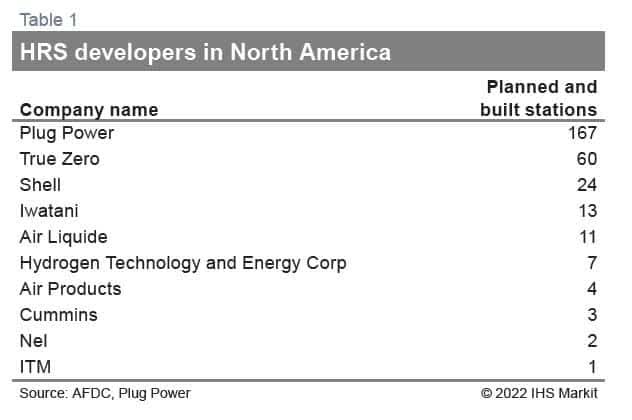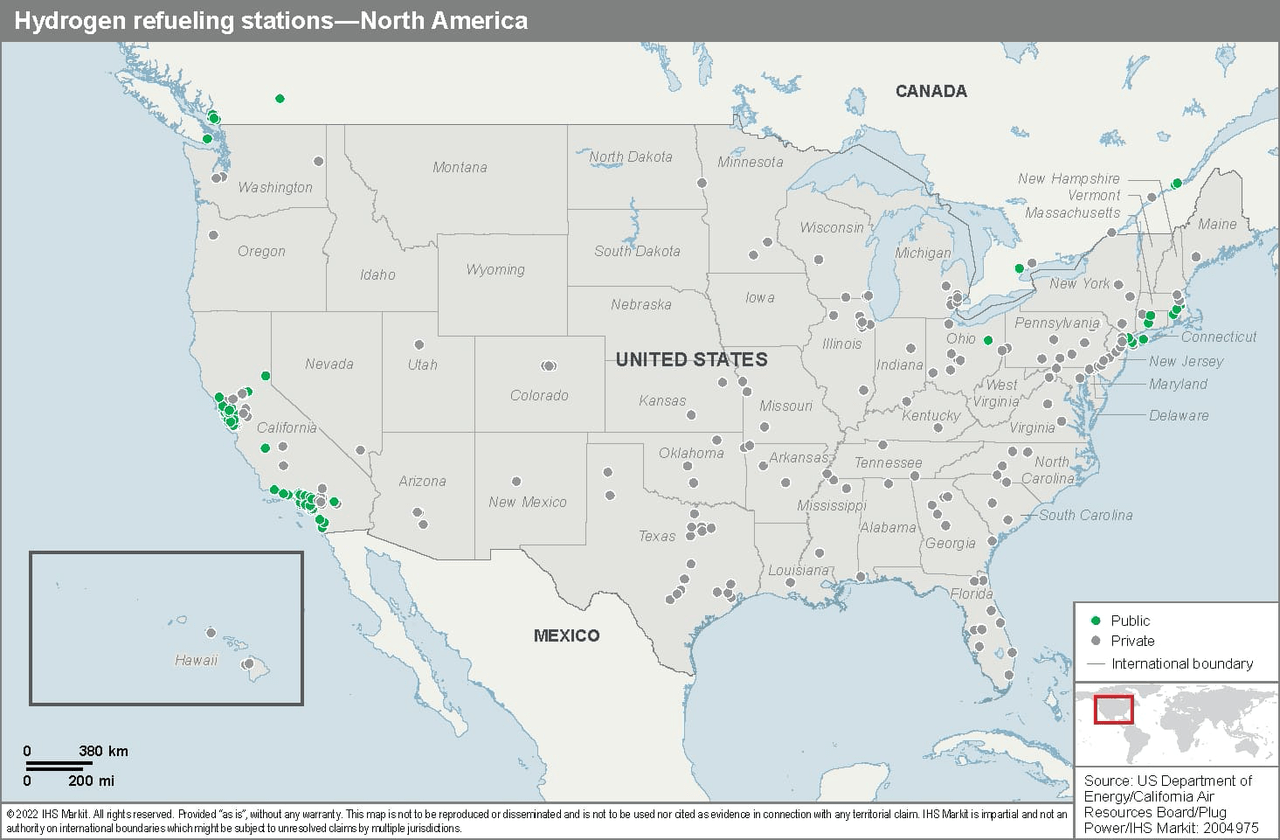Scharfsinn86/iStock via Getty Images
In 1869, Leland Stanford completed the transcontinental railroad with a golden spike. The overland route transformed the West, connecting the United States. A similar moment nears for fuel-cell electric vehicles (FCEVs). Private networks of hydrogen refueling stations (HRS) will soon allow FCEVs to drive coast-to-coast.
This conclusion surprises. The US Alternative Fuels Data Center (AFDC) shows 54 public stations operating today. California contains 47. British Columbia comes in a distant second. In comparison, the AFDC reports over 150,000 gasoline stations.
However, the government data overlooks a private solution. Many indoor warehouses use fuel cells to power lift trucks owing to indoor air quality constraints. Plug Power, a provider of hydrogen and fuel cell solutions, operates over 150 HRS at warehouses (see Figure 1). A southern route requires only a few more stops using Plug Power’s stations, assuming access is granted.
As with the railroad, government action could improve access. Capacity credits, incentives for third-party access, and other measures could encourage private networks to open their gates.
More stringent regulation will also drive change – by boosting the number of zero-emissions vehicles. Reductions in greenhouse gas, smog, and noise are on the slate for vehicle fleets across the United States.
A transition to FCEVs in long-haul trucking requires an HRS network that (when private stations are included) suddenly appears almost complete. Well-situated stations that connect the dots could be quite profitable – perhaps worthy of a golden spike.


Editor’s Note: The summary bullets for this article were chosen by Seeking Alpha editors.


Be the first to comment